#slave rebellion
Explore tagged Tumblr posts
Text

Paul Bogle (1822–1865) was a Jamaican Baptist deacon, farmer, and activist, widely regarded as a national hero of Jamaica. He played a key role in the Morant Bay Rebellion of 1865, an uprising against social and economic injustices faced by the African-Jamaican population during British colonial rule.
Bogle lived in Stony Gut, St. Thomas Parish, and was deeply influenced by his Christian faith and the teachings of George William Gordon, a politician and fellow activist. Known for his leadership and courage, Bogle was an advocate for the rights of freedmen who were struggling under oppressive laws, lack of land ownership, and systemic discrimination.
In October 1865, after years of petitioning and peaceful protests had been ignored, Bogle led hundreds of disenfranchised citizens to the Morant Bay courthouse to demand justice. The protest turned violent when British troops fired on the crowd, and Bogle’s followers retaliated. The rebellion was eventually suppressed, with Bogle captured, tried, and hanged on October 24, 1865.
Though his rebellion was crushed, it brought attention to the plight of Jamaicans, leading to social and political reforms. Bogle is celebrated as a martyr and symbol of resistance, and his legacy lives on through his designation as a national hero of Jamaica in 1969. 🇯🇲
#black people#black history#blacktumblr#black#black tumblr#pan africanism#black conscious#africa#black power#black empowering#Paul Bogle#african diaspora#black diaspora#slave rebellion#colonial resistance#Morant Bay Rebellion#jamaica#Caribbean history
27 notes
·
View notes
Text

The Death of Spartacus by Hermann Vogel
#spartacus#art#hermann vogel#ancient rome#slave revolt#slave rebellion#history#antiquity#thracian#gladiator#gladiators#roman republic#roman#romans#rebellion#revolt#uprising#europe#european#servile wars#third servile war#italy
180 notes
·
View notes
Text
September 9th marks the 284th anniversary of The Stono Rebellion of 1739✊🏾

When an Angolan brotha called, Jemmy, led a band of 20 slaves into rebellion on the banks of the Stono River in Charleston, S.C., which put unprecedented fear in Whites. It was because of this uprising that laws were enacted that outlawd the enslaved from learning how to read, gathering in groups, & growing their own food. Thus, making it one of the most significant rebellions in the history of the U.S. colonies.
Jemmy & the rebel band marched southbound on a road toward the river, carrying banners that proclaimed their war very, "Liberty!". Their numbers swelled with more enslaved women and men as they went. By nightfall, 100 rebels had joined the cause. They broke into a local firearms store, arming themselves with guns & ammo. As they marched, they killed every overseer in their path and forced any reluctant slaves to join them.
From there the band marched toward the house of a Mr. Godfrey, where they burned the house & killed Godfrey and his family. It was just shy of dawn when they reached Wallace's Tavern. Because the innkeeper at the tavern was kind to his slaves, his life was spared. The White inhabitants of the next several houses in their path were all slaughtered. Those enslaved by a Thomas Rose reluctantly joined the rebellion, but not before hiding their slaver - of which they were later rewarded for. Still, many more rebels gladly joined the cause. By this point, a Lieutenant Governor Bull eluded the rebels & rode on horseback to spread the alarm. Once the band reached the Edisto River, Whites colonists set out in armed pursuit. Shots were exchanged across both lines. By dusk, about 30 rebels had fallen & at least 30 more had escaped. In the end, most rebels were captured over the next month, then executed. The remainder were pursued and captured over the following 6mo - all except 1 who remained a fugitive for 3 years. The few survivors were sold off to plantations in the West Indies.

The immediate factors that sparked the uprising remain uncertain. Many rebels knew of small groups of runaways had made their way from SC to FL, where they had been given freedom and land. There was also an ongoing malaria epidemic surging across SC. Ultimately, this unprecedented act of rebellion demanded unprecedented legislature. The European colonists finalized a Negro Act into law which aggressively limited the privileges & movement of the enslaved. No longer would slaves be allowed to grow their own food, assemble in groups, earn their own money, or learn to read. Some of these restrictions had been in effect before the Negro Act of 1740, but had not been strictly enforced. This also resulted in the forced indoctrination of slaves into Christian schools systems.
Let us remember Brother Jemmy and those who fought, willingly or not, against the colonizers. Their sacrifice may have set a great legal precedent in European colonizer politics, but it set an even greater one that would spark many fires and fan many more flames of rebellion, war, and freedom. Every step taken from this moment onward was a necessary one to achieve our "freedom" as we experience it today.
We pour libations of water (especiallyfrom the Stono River), speak their names, & offer prayers toward their elevation.
‼️Note: offering suggestions are just that & strictly for veneration purposes only. Never attempt to conjure up any spirit or entity without proper divination/Mediumship counsel.‼️
#hoodoo#hoodoos#atr#the hoodoo calendar#atrs#the Stono Rebellion#stono river#Angola#Angolan#slave rebellion#south carolina
380 notes
·
View notes
Text

‘Toussaint L'Ouverture (1870)’ — George DeBaptiste (American, 1815-1875), chromolithograph ; 74.5 x 58.6 cm, Library of Congress, Washington, D.C.
#toussaint louverture#moors#moorish#haiti#haitian revolution#maroons#jacobins#slave rebellion#george debaptiste#chromolithography#american art#19th century#fez hat#library of congress
20 notes
·
View notes
Text

Nat Turner: A Rebel's Quest for Freedom and Inspiring Resistance
#nat turner#black power#south hampton vrginia#the birth of a nation#black excellence#slave rebellion#tik tok#black tik tok
147 notes
·
View notes
Text
Not Killing Me Softly: African American Women, Slave Revolts, and Historical Constructions of Racialized Gender
Freedom Center Journal, Vol. 1, Issue 2, June 2010
Rebecca Hall, J.D., PhD University of Cincinnati College of Law
#repost of someone else’s content#article#academic#currently reading#Black feminism#history#US history#slavery#slave rebellion#slave revolts#feminism#misogyny#misogynoir#racism#antiblackness#white supremacy
10 notes
·
View notes
Text

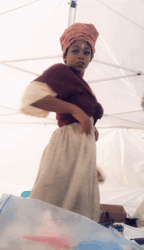



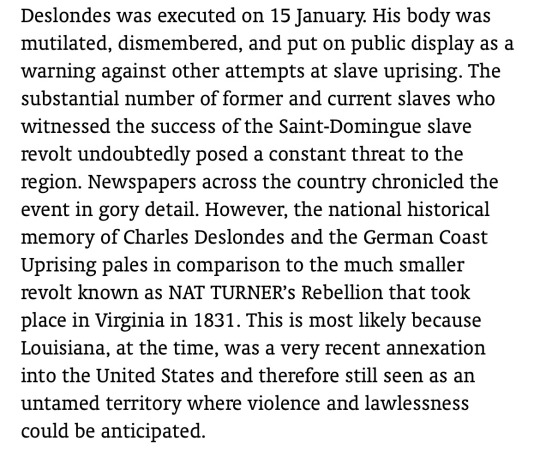

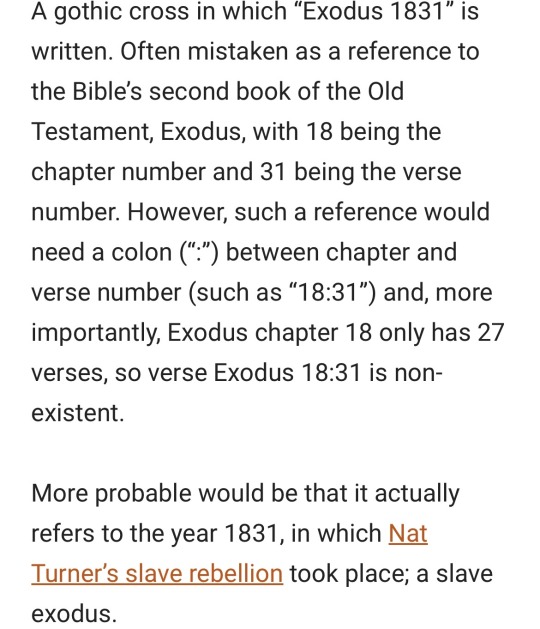
#this week#2019#German coast#uprising#slave rebellion#reenactment#thanks#Nola news#I found that stick#&made the fake baby#most people#had real props#lol
27 notes
·
View notes
Text
youtube
Israel vs. Palestine with Norman Finkelstein
November 17, 2023
Candace Owens speaks with political scientist and activist Norman Finkelstein whose primary fields of research are the Israeli–Palestinian conflict and the politics of the Holocaust. His parents are Holocaust survivors and in 2020, he was named the fifth most influential political scientist in the world.
#Norman Finkelstein#Candace Owens#Gaza#Palestine#Israel#Hamas#lies#context#concentration camp#Nat Turner#slave rebellion#oppression#genocide#starvation diet#zionism#Youtube
8 notes
·
View notes
Text
The 1791 Haitian Revolution of Black Slaves
Check out the newest LOST IN HISTORY blog post!
Haitian Black Slaves revolt against French control in 1791 The Haitian Revolution was the largest, most successful slave rebellion in the Western World. Black slaves initiated a rebellion in 1791 and by 1803, they’d ended not just slavery, but achieved independence over French colonial rule. Ironically, it was influenced by the French Revolution of 1789. This had brought forth new concepts of…
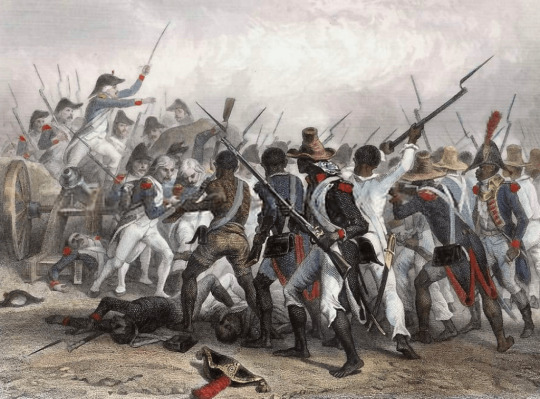
View On WordPress
3 notes
·
View notes
Text

5 notes
·
View notes
Text


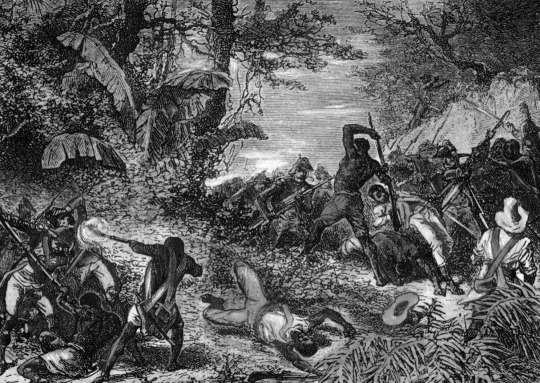
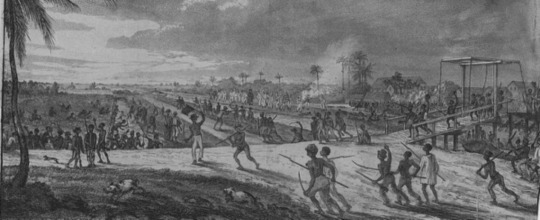
List of notable slave revolts in the Caribbean during the Transatlantic/European Slave Trade. These Slave revolts emphasise the collective struggle for liberation,
unity, and self-determination:
1. The 1638 St. Kitts Slave Revolt: Enslaved Africans resisted early attempts by European colonizers to dominate the island. This uprising showed that from the very beginning, Africans refused to accept their dehumanization and fought to retain their dignity.
2. Barbados Revolt of 1649: Africans in Barbados challenged the plantation system, laying the foundation for future resistance. This revolt demonstrated the shared struggle of African people across different colonies.
3. The 1675 Curaçao Revolt: Enslaved Africans, many of whom were from the Akan and other warrior societies in West Africa, plotted to overthrow the Dutch colonists. This revolt highlighted the persistence of African resistance traditions, even in exile.
4. Tacky’s War (1760, Jamaica) :Led by Akan warriors like Tacky, this revolt was deeply rooted in African military traditions. It was a call for liberation and unity, showcasing the resilience of African cultures under enslavement.
5. Berbice Slave Rebellion (1763, Guyana): Under Cuffy (Kofi), enslaved Africans controlled parts of Berbice for over a year. This Pan-African hero envisioned an independent African-led society in the Americas, directly challenging European colonialism.
6. Coromantee Wars (1765–1766, Jamaica): Enslaved Akan Africans led revolts against British plantation owners. The unity of African warriors in organizing these rebellions demonstrated the spirit of Pan-Africanism.
7. 1773 Grenada Revolt: Africans resisted their French and British oppressors, reflecting a Pan-African vision of collective liberation and defiance against European exploitation.
8. The First Maroon War (1728–1740, Jamaica): Maroons, descendants of escaped Africans, fought the British for autonomy. Their victory in establishing independent territories was a significant Pan-African triumph.
9. Haitian Revolution (1791–1804, Saint-Domingue): The most powerful expression of Pan-Africanism in the Caribbean, this revolution united enslaved Africans and free people of color. Leaders like Toussaint Louverture, Jean-Jacques Dessalines, and others overthrew French rule, ending slavery and creating the first Black republic.
10. Bussa’s Rebellion (1816, Barbados): Bussa, inspired by the African tradition of communal resistance, led this uprising against British slavery. It echoed Garveyite ideals of self-determination before their time.
11. Demerara Rebellion (1823, Guyana): Led by Jack Gladstone and Quamina, this revolt sought freedom for Africans in British Guiana. It reflected a broader Pan-African consciousness and the demand for dignity and justice.
12. Baptist War (1831–1832, Jamaica): Also known as the Christmas Rebellion, it was led by Samuel Sharpe, who united enslaved people under the banner of Christian and African liberation. This revolt hastened the abolition of slavery in the British Empire.
13. The Second Maroon War (1795–1796, Jamaica): Maroons resisted British incursions into their autonomy, preserving their African-rooted systems of governance and solidarity.
14. 1837 St. Lucia Revolt: Enslaved Africans rose up against British oppression. Their resistance embodied Pan-African ideals, rejecting the colonial domination of their homeland.
15. Trinidad Slave Revolt (1838): Enslaved Africans on the brink of emancipation staged a revolt, demonstrating their refusal to accept anything less than complete freedom.
16. 1733 St. John Slave Revolt (Virgin Islands): Enslaved Africans, many of whom were Akan, took control of the Danish colony for several months. Their strategic unity reflected a Pan-African ethos.
17. Leeward Maroon Wars (1730s–1740s, Antigua and Jamaica): These wars involved guerrilla tactics by escaped Africans who maintained cultural and spiritual links to their homelands.
18. Martinique Revolt (1833): Enslaved Africans rose up against French rule, signalling the unity of Black people against colonial oppressors across linguistic and cultural divides.
19. Santo Domingo Resistance (1795, Dominican Republic): Inspired by the Haitian Revolution, enslaved Africans rebelled, resisting both Spanish and French colonial systems.
#black people#black#black history#black tumblr#blacktumblr#pan africanism#black conscious#africa#black power#black empowering#slave revolts#Slave Rebellion#trans atlantic slave trade#african history#black culture#african culture#black community#caribbean history#afro caribbean culture#black liberation#black freedom#uprising#black revolution
194 notes
·
View notes
Text
The Problems with Slavery:
0 notes
Text
November 7th marks the 182nd anniversary of The Creole Ship Slave Revolt ✊🏾

The Creole was a slave ship owned by the Johnson-Eperson Co. that set sail in November 1841 carrying 135 enslaved Afrikans & shipments of tobacco from Richmond, VA to New Orleans, LA. Among them was a brotha given the name, Madison Washington - a runaway slave from Canada who was captured in VA while searching for his wife - and his wife, given the name, Susan.
On Nov 7th, Washington along with 18 other males made their move to overthrow the ship. They overpowered the crew, killing one of the slavers in the process. The ship’s wounded captain, family, & crew survived the battle. The battle was a success though not without its cost; one of the rebels was mortally wounded and succumbed to his injury. Desperate to save his own neck, the overseer on board swore he'd navigate the ship for them.
First, the rebels demanded they set sail for Liberia, Afrika; but the long distance and low food/water supplies ixneyed that possibility. One of the rebels, a brotha given the name, Ben Blacksmen, asserted that they should aim for the British controlled islands in the West Indies; word had spread of previous rebels gaining their freedom there after overtaking American slave ships. He hoped the same fortune would befall them.

They arrived in Nassau, Bahamas 2 days later. There, they were met by the harbor pilot and his men - a crew of all local Black Bahamians. The harbor pilot declared them free once ashore. Upon discovering that the Creole's captain was also mortally wounded, the American consul was notified of the revolt and demanded the arrest of Washington & all 18 rebels implicated in his death under charges of Mutany. His wife, Susan, and the other Afrikan survivors were given leave to live freely within the British boundary of the West Indies.
Some stayed in the Bahamas to start a new life, others sailed for Jamaica to do the same. Only 5 survivors chose to remain aboard the Creole set sail for New Orleans, LA to return to American Slavery ; 3 women, 1 boy, and 1 girl. It wasn't until April 16th of the next year that Washington and the other 18 rebels were freed and joined their companions on West Indian soil as freefolk.
Moreover, for their courage, unity, & nerve, 128 enslaved Afrikan Peoples gained their freedom from this day, making the Creole Slave Revolt THE most successful revolt in U.S. history.
We pour libations of water, speak their names, & offer prayers toward their elevation - especially those lost & returned to bondage.
#hoodoo#hoodoos#the hoodoo calendar#The Creole#The Creole Slave Revolt#Slave rebellion#Slave revolt#Freedom Fighters#black history
194 notes
·
View notes
Text
0 notes
Text
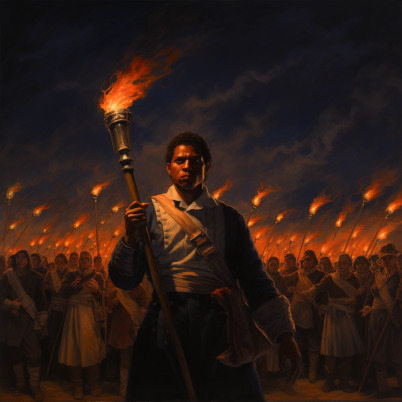
Gabriel Prosser: Igniting Freedom and Defiance Against Slavery
#black power#black excellence#slave rebellion#richmond#richmond virginia#Gabriel Prosser#tik tok#black tik tok
27 notes
·
View notes
Text
Denmark Vesey (aka Telemaque), a Black American carpenter, is accused of planning a slave rebellion in Charleston, South Carolina. He would be tried & convicted, & 35 enslaved people would be executed by hanging. June 16, 1822.
Subscriber Content Add content here that will only be visible to your subscribers. Payment Image: Denmark Vesey (Public Domain) On this day in history, June 16, 1822, Denmark Vesey (aka Telemaque), a Black American carpenter, is accused of planning a slave rebellion in Charleston, South Carolina, involving thousands of enslaved Black people and the subsequent murder of antebellum slave…

View On WordPress
1 note
·
View note